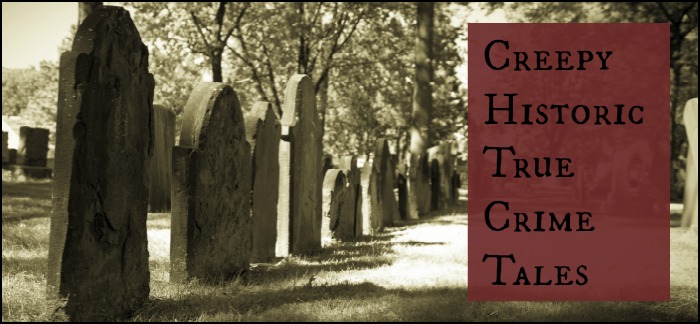Halloween is the time of year when ghosts and ghouls come out to play. Whether these supernatural entities actually exist is a matter of debate, but there’s no doubt that ghouls of the human persuasion are very much a part of this world. Following are four of the creepiest true crime tales from throughout history—made all the more disturbing because of the fact that to this day no one knows which human monsters committed them.
——————–
1. The Axeman of New Orleans
Just reading the title of this entry, you know you’re in for an unpleasant tale. From May 1918 to October 1919, a mystery man terrorized New Orleans and surrounding communities, breaking into homes in the dark of night and killing their sleeping inhabitants, often with axes he found in the victims’ domiciles. The ultimate death toll was at least six, though some researchers place the number higher than that. Investigators considered several theories for the crime spree, including the belief that the Axeman was carrying out a racist agenda, as most of his victims were Italian-Americans. Another alleged motive was that the Axeman was simply trying to promote jazz music. In a letter published in newspapers and purported to be from the Axeman, the writer stated that he was planning to commit murders in the early morning hours of March 19, 1919, but would spare the lives of anyone who was listening to a live jazz band. New Orleans residents subsequently filled dance halls and invited scores of jazz musicians into their homes for impromptu concerts. The city was spared from axe-related carnage that night, but whether the letter writer was the “real” Axeman or simply a crank is a matter of debate. The identity of the Axeman of New Orleans remains just as mysterious today as it was nearly a century ago.
——————–
2. Bella in the Wych Elm
The human skull that four boys found inside a wych elm tree in 1943 near the community of Stourbridge, England has been a source of mystery—and fear—for decades. After one of the boys reported their find, police investigated the hollow trunk where the skull had lain and discovered an almost-complete skeleton…as well as a hand buried nearby. The bones belonged to an unknown woman who had apparently suffocated on the bit of taffeta that examiners found inside her mouth. The body had been inside the tree for about a year and a half, and the timing of the woman’s death and discovery—during World War II, when people went missing on a regular basis—made the process of discovering her identity difficult at best. In addition, after the murder, the phrase “Who Put Bella in the Wych Elm?” began appearing as graffiti around the region, adding a further element of menace to the mystery. Who was Bella? Did the graffiti writer know, and was that person the killer? A few theories have been put forward regarding the identity of the woman, one involving witchcraft, another involving espionage, but nothing definitive has been found to establish just who put “Bella” in the wych elm so many years ago.
——————–
3. The Hinterkaifeck Murders
When Andreas Gruber’s neighbors paid a visit to his farm on April 4, 1922, they were concerned because they hadn’t seen any of the property’s inhabitants for a few days. A horrific sight greeted them. As they explored the farmstead known as Hinterkaifeck, located in southern Germany, they found that the six residents of the Gruber farm had been murdered—and in brutal fashion. In the barn were the bodies of Andreas and his wife Cäzilia, as well as their daughter Viktoria and their 7-year-old grandchild Cäzilia, who was Viktoria’s daughter. Inside the house were the bodies of Viktoria’s 2-year-old son Josef and the family’s maid, Maria Baumgartner. Each had been killed with a mattock, a tool similar to a pickaxe. To this day, the case remains unsolved, though it certainly doesn’t lack for creepy details. A few days before March 31, 1922, which investigators narrowed down as the date of the crime, Andreas reported to neighbors that he had found a set of footprints leading through the snow from the nearby woods to his farmstead—but no set of footprints leading back. In addition, neighbors reported seeing smoke coming from the chimney of the Grubers’ home during the weekend before the bodies were found—though at that point, the family and its maid had already been murdered. To this day, no one knows exactly what happened at Hinterkaifeck and who caused it—and at this point, no one probably ever will.
——————–
4. The Villisca Axe Murders
Another family slaughter, and another crime carried out with the use of an axe. The Villisca Axe Murders took place in the early morning hours of July 10, 1912. An unknown assailant entered the home of Josiah and Sarah Moore, located in Villisca, Iowa, and killed the entire family, which included 11-year-old Herman, 10-year-old Katherine, 7-year-old Arthur, and 5-year-old Paul. Unfortunate enough to be spending the night were Katherine’s friends, Lena and Ina Mae Stillinger, who, like the Moores, were bludgeoned to death with an axe. The Moores were respected members of the community, and motives for such a gruesome crime were hard to come by. Cigarette butts in the Moores’ attic led police to theorize that the killer had lain in wait for the family, whose members had attended a church function the night before the crime and, upon returning at about 10 p.m., had prepared themselves for a slumber from which they would never awake. A traveling minister named George Kelly, who had been in Villisca on the night of the murders and had an unseemly interest in the case, stood trial twice for the crimes, but was ultimately acquitted. Despite the existence of other suspects, the case was never solved.

Leave a Reply